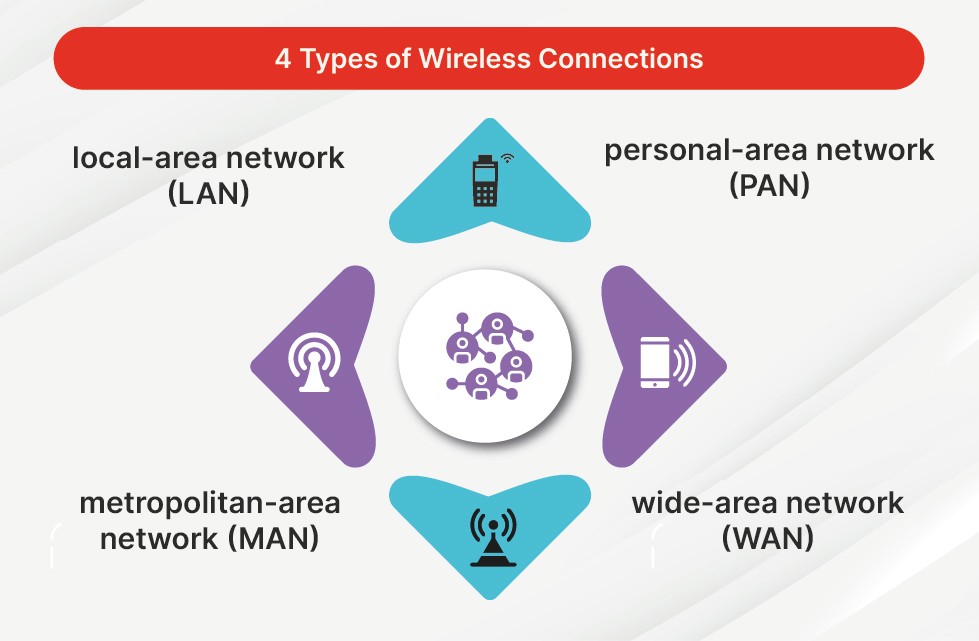Loading...
Wireless Solutions
Wireless Solutions
"WIRELESS SOLUTIONS OFFER ADVANCED CONNECTIVITY AND MOBILITY CAPABILITIES FOR SEAMLESS COMMUNICATION AND ACCESS."

Description
" A wireless network refers to a computer network that makes use of Radio Frequency (RF) connections between
nodes in the network. Wireless networks are a popular solution for homes, businesses, and telecommunications
networks.
It is common for people to wonder “what is a wireless network” because while they exist nearly everywhere
people live and work, how they work is often a mystery. Similarly, people often assume that all wireless is
Wi-Fi, and many would be surprised to discover that the two are not synonymous. Both use RF, but there are
many different types of wireless networks across a range of technologies (Bluetooth, ZigBee, LTE, 5G), while
Wi-Fi is specific to the wireless protocol defined by the Institute of Electrical and Electronic Engineers
(IEEE) in the 802.11 specification and it’s amendments."
 WLANS
WLANS WWANS
WWANS WIFI
WIFI
 OFC
OFC RF
RF SMARTPOLE
SMARTPOLE

Benefits
Why switch to wireless networks when your legacy system is doing just fine? Amazingly, wireless networks offer the following six advantages when compared to traditional wired networks:
- Increased Mobility: Wireless networks allow mobile users to access real-time information so they can roam around your company’s space without getting disconnected from the network. This increases teamwork and productivity company-wide that is not possible with traditional networks.
- Installation Speed and Simplicity: Installing a wireless network system reduces cables, which are cumbersome to setup and can impose a safety risk, should employees trip on them. It can also be installed quickly and easily, when compared to a traditional network.
- Wider Reach of the Network: The wireless network can be extended to places in your organization that are not accessible for wires and cables.
- More Flexibility: Should your network change in the future, you can easily update the wireless network to meet new configurations.
- Reduced Cost of Ownership over Time: Wireless networking may carry a slightly higher initial investment, but the overall expenses over time are lower. It also may have a longer lifecycle than a traditionally connected network.
- Increased Scalability: Wireless systems can be specifically configuredto meet the needs of specific applications. These can be easily changed and scaled depending on your organization’s needs.